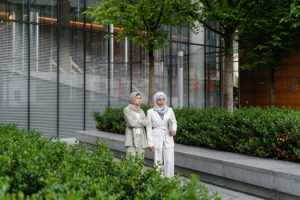The Intersection of Fashion and Architecture
The worlds of fashion and architecture have long been intertwined, with each inspiring and influencing the other. While one may seem to focus purely on aesthetics and the other on function, the two worlds intersect in intriguing and unexpected ways. From iconic buildings that serve as backdrops for fashion shows to designs that blur the lines between fashion and architecture, the relationship between the two industries goes far beyond mere surface similarities. In this article, we take a closer look at the intersection of fashion and architecture and how they complement and enrich each other.
Fashion and Architecture: Two Creative Industries
At first glance, fashion and architecture may seem like two completely distinct and unrelated fields. However, both involve a high level of creativity and imagination, employing various elements like color, form, texture, and structure to create visually appealing and functional designs. The similarities and overlaps between these two industries are evident in the way they both draw inspiration from their surroundings, and how they use different mediums to express their artistic visions.
Architectural Influence on Fashion
A notable link between fashion and architecture can be seen in the influence that the latter has on the former. Designers often take cues from iconic buildings and architectural styles to create their collections. One of the most significant examples of this is the iconic Chanel Spring/Summer 2012 fashion show, which took place within the walls of the Grand Palais in Paris, designed by architect Charles Girault.
Designers also incorporate architectural elements in their garments, such as structured pieces that mimic the lines and shapes of buildings. The use of unconventional materials, such as metals or plastic, is another way fashion designers draw inspiration from architecture, as it allows them to create innovative and unique pieces that blur the lines between fashion and architecture.
Fashion as Inspiration for Architecture
On the flip side, the world of architecture has also been inspired by fashion. Architects have used fashion as a starting point to create buildings that possess elements of movement, fluidity, and dynamism, just like in fashion. One notable example is the Guggenheim Museum Bilbao, designed by Frank Gehry, which has been likened to a flowing fabric draping over the landscape.
Moreover, the concept of “architecture of place” has also been heavily influenced by fashion. The idea that a building should not only serve its function but also cater to the senses and emotions of its occupants is akin to the philosophy behind fashion, where clothes should not only serve their practical purpose but also make the wearer feel a certain way.
The Blurring of Boundaries
In recent years, there has been a blurring of boundaries between fashion and architecture, with collaborations and cross-disciplinary projects becoming increasingly common. One example is the London-based fashion brand COS’s collaboration with the Japanese architectural firm Sou Fujimoto to create an art installation for Milan Design Week in 2016. The installation, titled “Forest of Light,” blurred the boundaries between fashion, architecture, and technology, creating an immersive experience for the visitors.
This intersection of fashion and architecture has also extended to the realm of sustainable design. Both industries have been working towards a more sustainable and eco-friendly approach, with fashion designers creating garments from recycled materials and architects incorporating green design principles in their buildings. This shared goal has led to collaborations such as the Fashion for Good Center in Amsterdam, designed by architectural firm Gensler, which provides a platform for the fashion industry to showcase sustainable innovations.
The Future of Fashion and Architecture
The collaboration between fashion and architecture is only set to grow further in the future, with the two industries influencing and shaping each other’s creative processes. As sustainability becomes an increasingly crucial factor, the lines between the two industries will continue to blur, leading to transformative and innovative designs that cater to both form and function. With this exciting intersection of fashion and architecture, we can expect to see more unconventional and boundary-pushing designs that inspire and challenge our perceptions.
In conclusion, the relationship between fashion and architecture goes beyond mere surface-level similarities and has a deeper connection based on shared creative principles and goals. As these two industries continue to inspire and influence each other, we can only expect to see more breathtaking and groundbreaking designs that blur the lines between the two, creating a unique and beautiful intersection of fashion and architecture.









